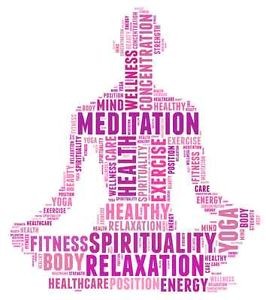Psychologists are exploring complementary therapies and integrated approaches to better treat the complex problem of chronic pain.
If cancer is “the emperor of all maladies,” as physician and author Siddhartha Mukherjee wrote, chronic pain may be the empress, affecting 100 million people in the United States and costing up to $630 billion each year in treatments and lost productivity, according to a 2011 report from the Institute of Medicine (IOM). For many, pain digs in and cuts deep. A 2012 survey funded by the National Center for Complementary and Integrative Health (NCCIH) found that some 25.3 million U.S. adults — 11.2 percent — had been in pain every day for the preceding three months, and nearly 40 million experienced severe pain.
Americans often seek pain relief from a pill, with some 5 million to 8 million using opioid painkillers to ease their pain, according to a 2015 report from the National Institutes of Health (NIH). That number has greatly increased, from 76 million prescriptions in 1991 to 219 million in 2011.
But medication doesn’t work for everyone, and the number of people addicted to or overdosing on painkillers has been rising, that report says. Surgery, another treatment option for some types of pain, is expensive, often ineffective and can require a long recovery. Meanwhile, research suggests that chronic pain is a complex condition that involves emotions, including stress and anxiety, perceptions and social influences.
In light of these insights, a number of government agencies are launching a national pain strategy to overhaul the research, prevention and treatment of chronic pain (see sidebar). The strategy calls attention to chronic pain’s crippling impact on public health, and maps coordinated, comprehensive care that better addresses each person’s experience of it, says Linda Porter, PhD, policy advisor for pain at the National Institute of Neurological Disorders and Stroke, who co-chairs the project’s oversight committee. “We’re looking for a multidisciplinary approach and multiple modalities, including complementary medicine, and to find a way to reimburse for those strategies — a way that’s really geared to the bio-psychosocial aspects of pain,” she says.
In tandem with this shift, scientists are putting more effort into studying complementary therapies, including hypnosis, meditation and yoga, that may ease pain with fewer side effects and help people manage their own symptoms. Care should be tailored to each person’s needs and a pain treatment plan should involve psychologists, primary-care clinicians and physiotherapists exploring these ways to enhance traditional approaches to pain management, experts say.
“None of these therapies is a cure in itself — it’s a factor of matching people to the best treatment,” says psychologist Mark Jensen, PhD, of the University of Washington department of rehabilitation medicine. “Our findings indicate that there are a number of psychological treatments that can benefit subgroups of people tremendously. In fact, given their overall efficacy and lack of negative side effects, these should probably be considered first-line treatments for many chronic pain conditions.”
By Stacy Lu
2015
Continue reading the full article from American Psychological Association here


